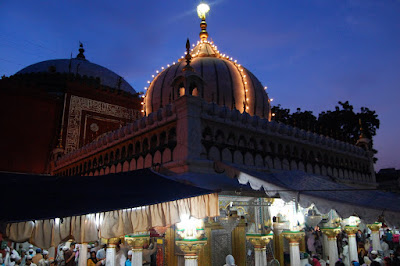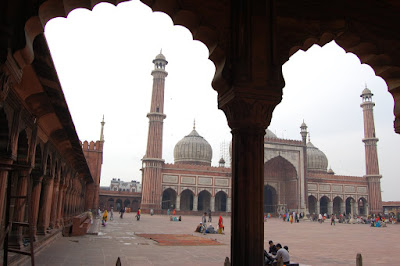And such amalgamation of cultures and religion lead to many stories and legends to be born. Adding to the mystic quality of this land, which through centuries had sustained its mythologies and beliefs. Even till today in spite of the modern technology and lifestyle, people still go back to their beliefs and faith.
One such instance is the small town of Amroha situated in Uttar Pradesh, 134 kilometers from Delhi. This town was established by King Amarjodha around 474 BC.

This town has great historical importance not only in respect to its age and ancient heritage, but also to this strange legend of the spiritual belongings. As legend goes, it was on 30 June 1272 AD when a saint came to this small town from a town Wasit in Iran via Multan. He was the Holy Saint–Syed Husain Sharafuddin Shahvilayat–. This town–Amroha–became his place of residence and prayer.

After his death his place of burial in Amroha came to become a famous place for pilgrimage and spiritual importance. It still draws huge believers and the non-believers equally. A strange phenomena occurs here. The grave site has a large numbers of scorpions, –a deadly venomous insect– they surprisingly don’t bite in the vicinity of the grave. This miracle has made many people to travel to this place even from far off lands for the authentication of the word of mouth. It is the inhabitants of this town– the Naqvi clan–who have their family tree traced - to Syed Shahvilayat proudly boast that one can carry the scorpion out of the shrine’s vicinity with the permission of the saint for a promised time, in which the scorpion will obey his master and not harm the carrier. If the time passes by, then there is no guarantee if the same scorpion stings.

It is also said that this shrine has medicinal cures for some ailments. Like in the case of corns which till date have no cure in modern medicine. It is said that if anyone suffering from corns brush their feet with broom that is used in the dargah the corns will be healed. Also adding to mystique of this place is in the autumn season that glucose pills fall from the tree which has sprouted from the grave of Bibi Bakhoi (daughter of the syed vilayat). And the same dissolves in the mouth instantly.

This area where the holy saint rests is also shared by his family members. His wife–Hazrat Kaneez Fatima urf Tahira–his son–Syed Amir Ali urf Doodha Dhari–his daughter–Bibi Bakhoi–his Grandson–Dade Raje– are some of the members of the family who rest here. Syed Amir Ali urf Doodha Dhari never ate food or drank water. He existed on milk alone. Therefore, another medicinal ability of the shrine shared by Syed Amir Ali urf Doodha Dhari is to provide milk to animals and women who are unable to lactate.

The Land of Scorpions. by Shariq H Naqvi is licensed under a Creative Commons Attribution-Noncommercial-No Derivative Works 2.5 India License.
Many people from different walks of life, all religions, any caste visit this shrine for the blessings of this Holy Saint for their wishes to come true. Amroha has been a center of spirituality for ages attracting many till date and the crowd of people will still throng to this place which is called “The Land of Scorpions”.
By: - Shariq Haider Naqvi.





































